Portuguese Food: Most Popular Dishes in Portugal to try
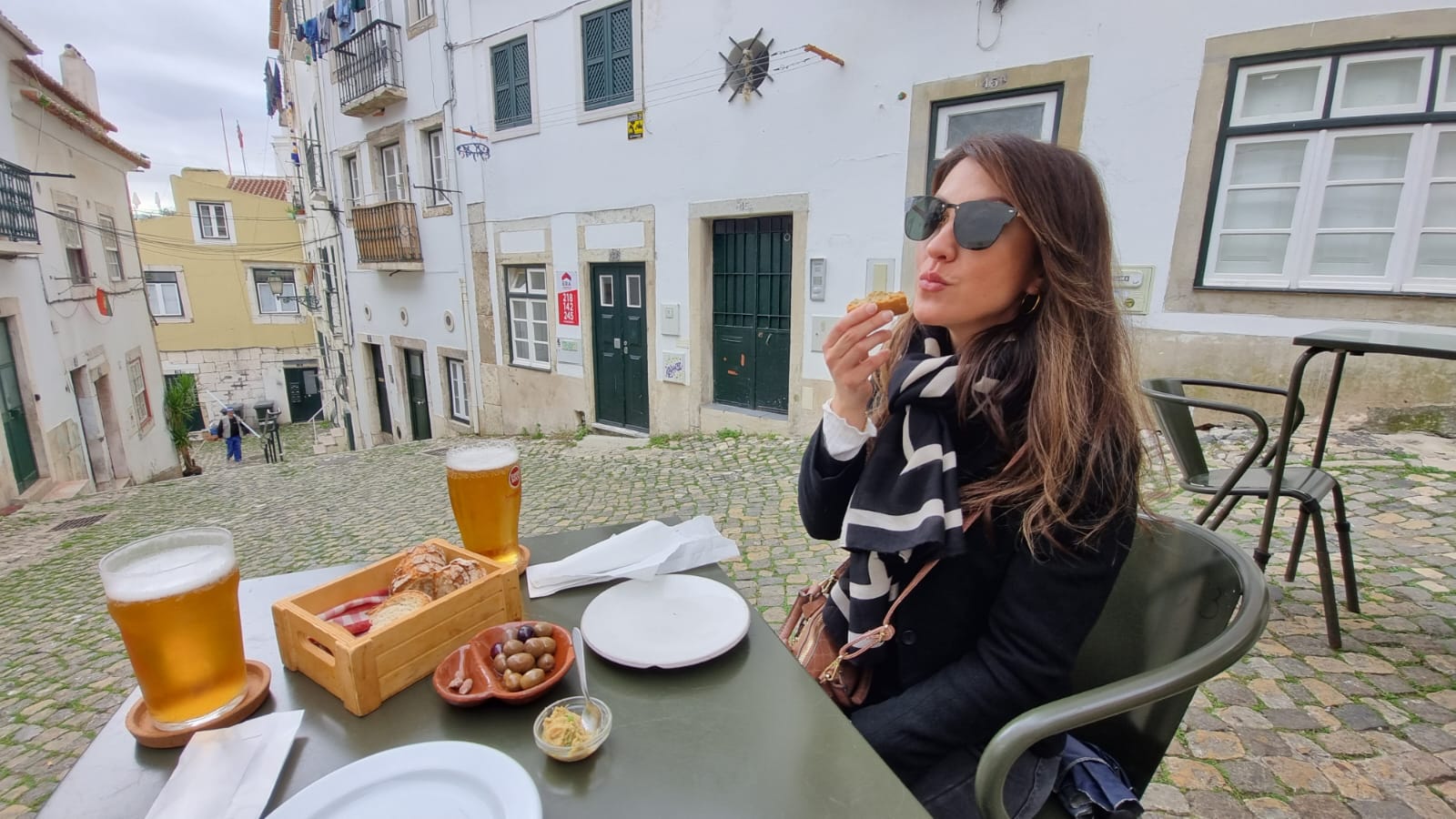
After living in Portugal for over a year now, JP and I can confidently say that Portuguese Food has become an integral part of our lives. As Chileans, we were initially unsure about what to expect, but we’ve discovered dishes full of flavors and others that don’t excite us that much, to say the least.
As we all know, everything depends on taste and preferences. However, we’ll be completely honest about what you must try and what foods are really overrated.
Since we arrived, we decided to travel primarily around Portugal for the first couple of years to really get to know the culture, food, and way of living.
We’ve traveled from Algarve to Porto, and even though we haven’t tried every single dish, we have tried most of the popular Portuguese foods.

Where to eat Portuguese food?
Our best recommendation for you is to head to a “Tasca”, a traditional often family-run eatery, where you can find real portuguese food with that homemade flavor.
While modern restaurants and international cuisine have gained popularity in Portugal, tascas remain an integral part of the country’s culinary landscape. They offer a unique, authentic dining experience that reflects the heart of Portuguese food culture.
How to recognize a Tasca
Tascas are informal, unpretentious establishments. They’re typically small, cozy places, often with just a few tables with mostly locals having beer with some snack food or petiscos (small plates or snacks, similar to Spanish tapas) Many tascas feature simple, rustic décor, sometimes with football memorabilia or old photographs on the walls.
They serve traditional Portuguese dishes, often prepared using family recipes passed down through generations. They’re known for offering hearty meals at reasonable prices.
You’ll find classics like bacalhau (salt cod), sardines, caldo verde (kale soup), and bifanas (pork sandwiches). Additionally, they offer local beers and wines.

Famous Portuguese Food
Bacalhau
If you like Codfish Portugal is the place to try it. The Bacalhau is cooked in so many different ways that you will find a way to like it, even if the smell or taste are too strong for you.
Popular ways to eat Bacalhau in Portugal are:
- “Bacalhau à Brás” – it reminds us a bit of our Chilean “chorrillana” but with a Portuguese twist. It’s a fried mixture of onion, shredded bacalhau, beaten egg and shredded fried potatoes.
- “Pastel de Bacalhau” – This is a famous street food that you’ll find in every pastelaria or restaurant where you can have it as an appetizer or “Petisco”(Portuguese name for “Tapas”)
The most famous and traditional place to have a Pastel de Bacalhau is in “Casa Portuguesa do Pastel de Bacalhau”. The place is known to prepare this small, deep-fried fishcake also known as Codfish Fritters with Serra da Estrela Cheese.
This cheese is made in the mountainous region of Serra da Estrela in Portugal. Under the name “Queijo Serra da Estrela”, it is a Protected designation of origin (PDO) in the European Union as well as the UK and the Portuguese are really proud of it. Is basically made with sheep milk which must need to be maturated minimum 30 days. The smell and the flavor are really strong and overpowering even the bacalhau, we love cheese but not this kind of stinky ones.
But don’t worry if you are like us, there are several places where you can find this “Boulinhos de Bacalhau” without the cheese and you can really appreciate the salty flavor of the fish.
- An other typical Bacalhau dish is “Bacalhau com Natas”, this recipe is easy to love has the same ingredients as “Bacalhau à Bras” but everything combined with a silky cream cooked au gratin.
- Last but not least, simple but flavorful and my favorite way to have Bacalhau, is “À Lagareiro”. Cooked until golden and drizzled generously with olive oil, this dish becomes tender and irresistible. The oil, rich with the aroma of garlic, seeps into every crevice. Accompanying the main dish are roasted potatoes, their skins left on and gently crushed. These potatoes act like sponges, absorbing all the delicious flavors from the plate. The result is a mouthwatering combination that brings together the best of simple, flavorful ingredients.
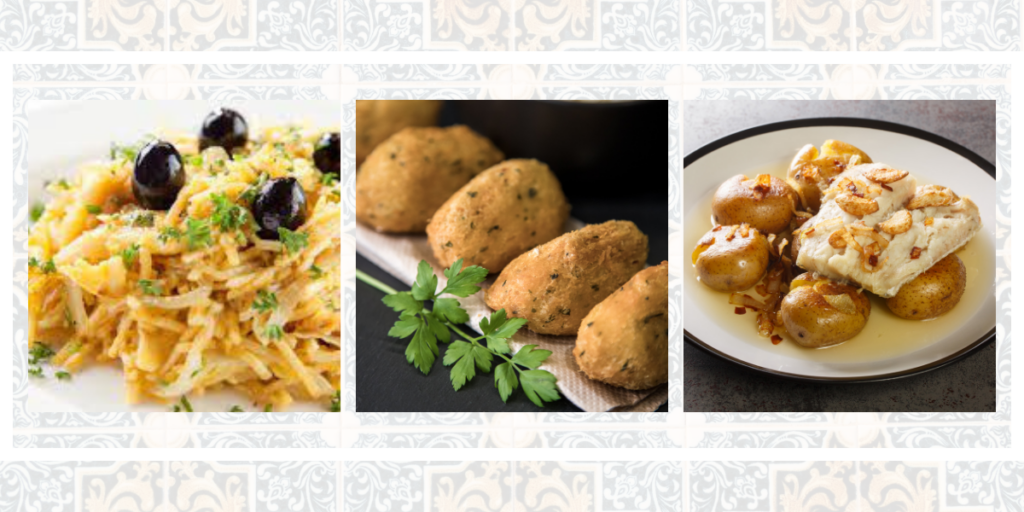
Sardinhas
You’ll find Sardinhas (sardines) on nearly every street corner and restaurant menu in Portugal during the summer months. These small, oily fish are undoubtedly the country’s most popular and traditional dish.
Grilled over charcoal until crispy on the outside and tender on the inside, Sardinhas have a distinct, robust flavor that might take some getting used to for first-time tasters. The intense taste can be quite polarizing – some visitors fall in love instantly, while others find it a bit overwhelming after a couple of bites.
It’s worth noting that Sardinhas hold a special place in Portuguese hearts. They’re not just food, but a cultural icon, especially during the festive Santo António celebrations in June. If you’re not a fan, it’s best to politely decline rather than criticize. Portuguese people are generally understanding of different tastes, but they do take great pride in this traditional dish.
The sardine is so important to Portuguese culture that it’s become a symbol of the country, often appearing on souvenirs and traditional pottery.
Whether you end up loving or merely appreciating Sardinhas, trying them is an essential part of experiencing Portuguese cuisine and culture, for example for us was a one time thing only.
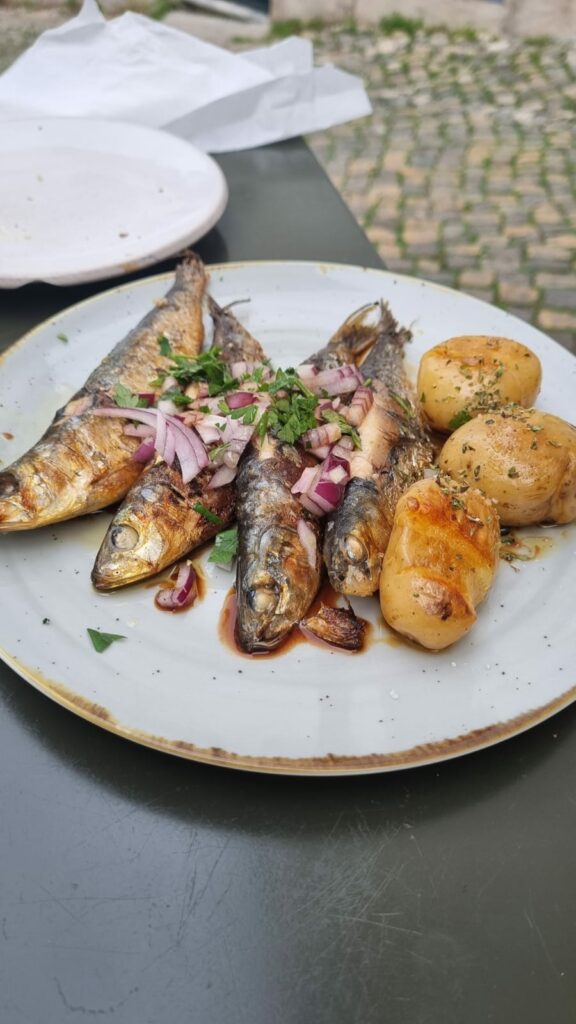
Polvo
Definitely Karina’s favorite Portuguese ingredient is Octopous, “Polvo à Lagareiro” and “Salada de Polvo” both dishes deserve to be eaten on your way to Portugal. Polvo a Lagareiro, literally roasted octopous with potatoes, and the “salada” is a refreshing Salad with cut up octopus with fresh pepper bells and onions with olive oil and white wine vinegar dressing. Also, the “Arroz de Polvo” is another must try.
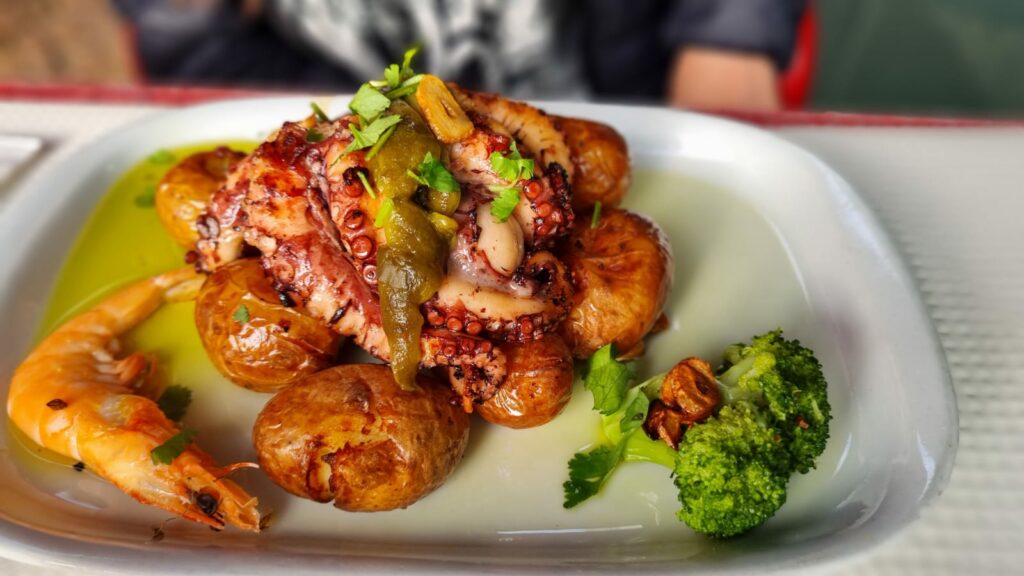

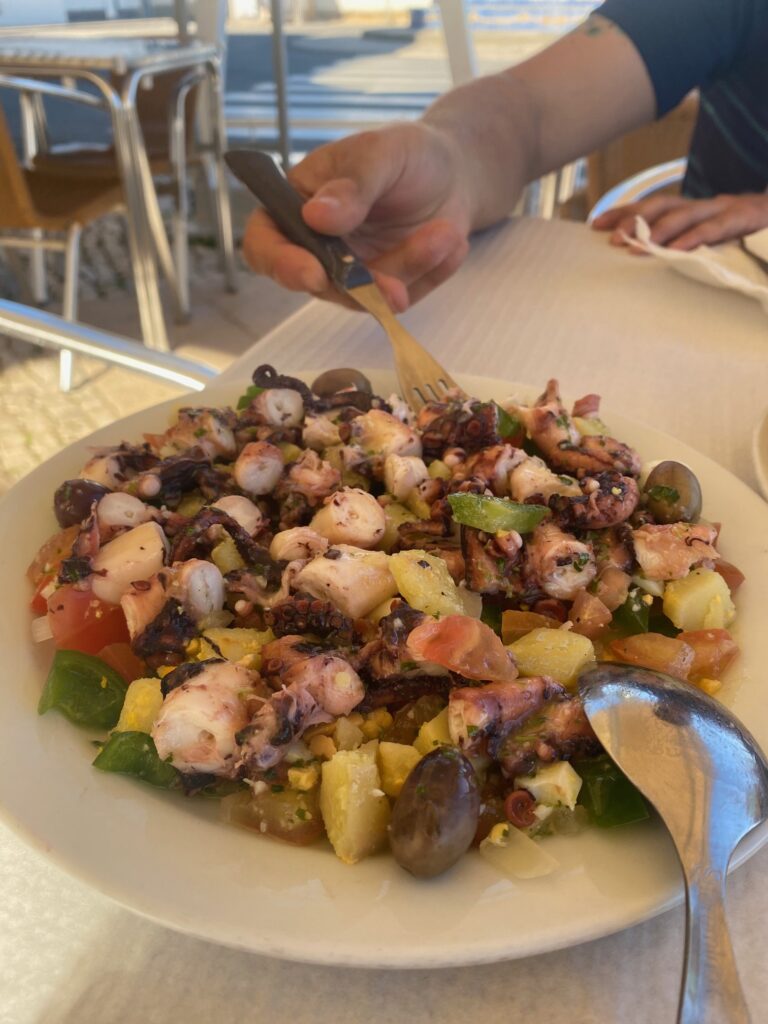
Porco
Portugal and Spain share the best pork dishes and you will find them in every restaurant along Portugal with different cooking methods. Portuguese people are very proud of their “Bifanas”, sandwiches made with thin slices of slow cooked pork. Even though, the taste is good, coming from a veeeryy rich sandwich culture this one for us is very overrated, just like the typical “Pão com Chouriço”. Is safe to say, that the Portuguese have excellent bread no doubt about it, but the lack of ingredients in their sandwiches makes them bland and boring.
Next Porco dish that we absolutely love is “Porco à Alentejana” and is one of the most traditional and popular portuguese food. Originally from Alentejo (South-center part of Portugal) this flavorful dish it’s a combination of marinated pork (Usually Porco Preto) and clams, with potatoes and coriander everything transformed into a delicious stew to die for.
Are you a fan of succulent roast suckling pig? If that’s the case “Leitão” is your must try portuguese food. The pig is marinated in a paste of garlic, salt, pepper, and other spices, then slow-roasted in a wood-fired oven until the skin is crispy and golden, and the meat is tender and juicy.
One of the best places to try Leitão is in the town of Mealhada, known as the capital of roast suckling pig. Here, numerous restaurants specialize in this delicacy, each claiming to have the perfect recipe.
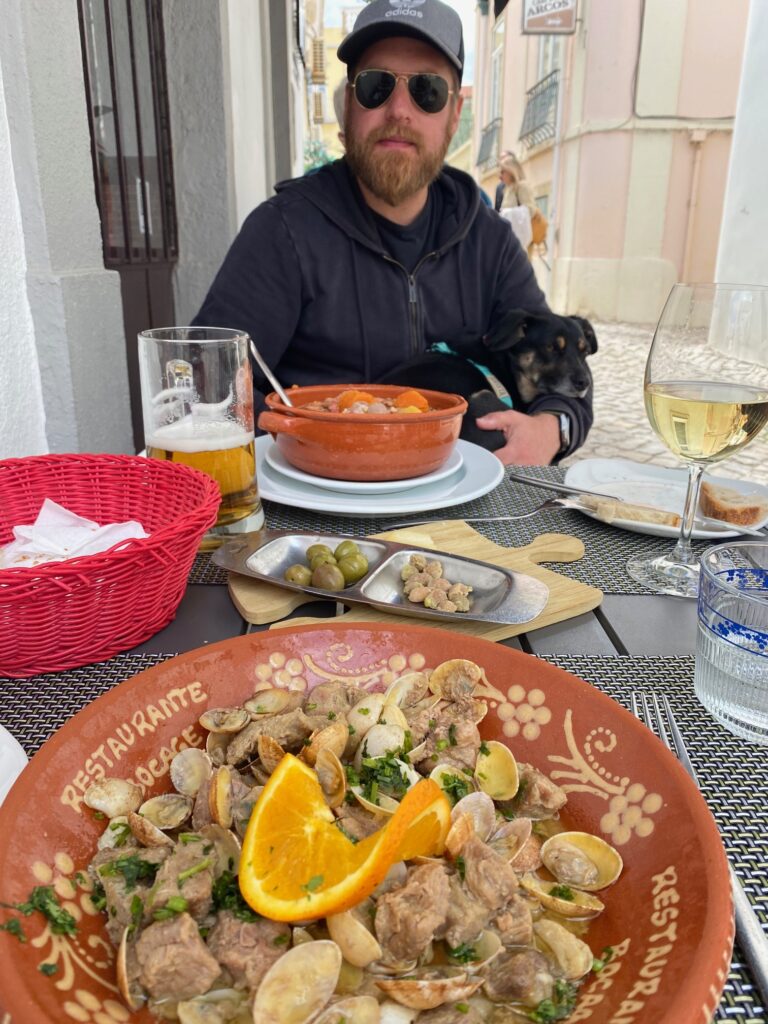
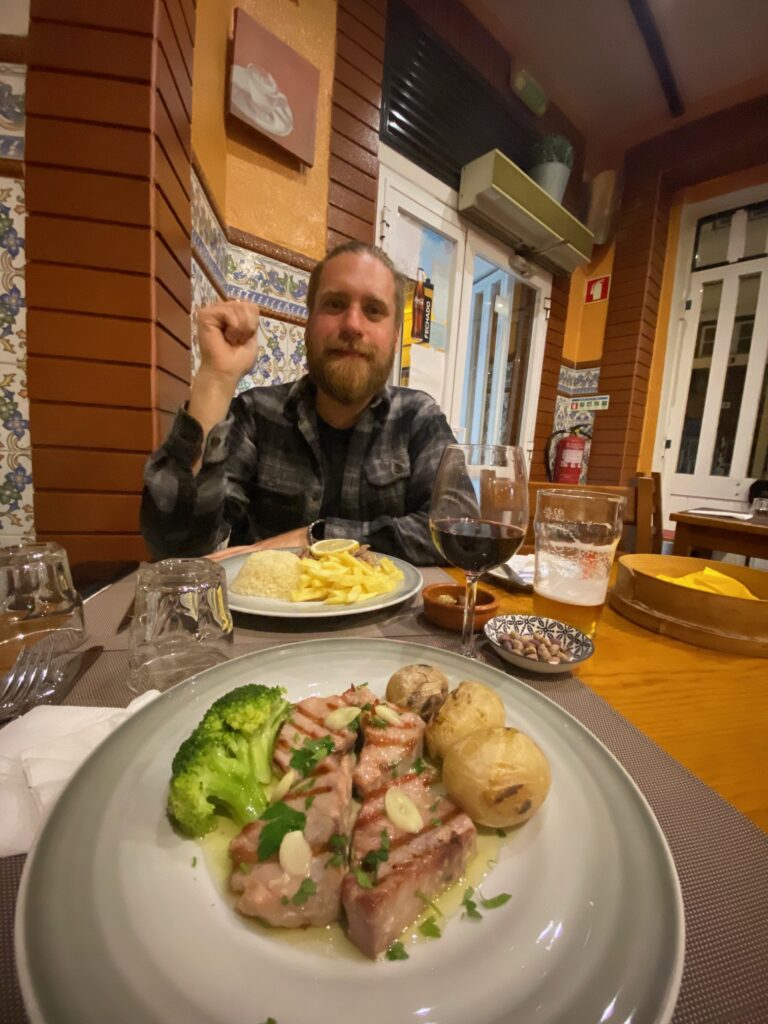
Peri Peri Chicken
Picture this: succulent chicken, marinated in a fiery blend of African bird’s eye chili (also known as piri-piri), garlic, lemon, and a mix of secret spices. It’s then grilled to perfection, resulting in a smoky, crispy exterior and juicy interior. The chicken is typically served with a side of crispy fries and a fresh salad, creating a perfect balance of flavors and textures.
But what makes Peri Peri chicken truly special is its rich history. Legend has it that Portuguese explorers discovered the African bird’s eye chili during their voyages in the 15th century. They were so captivated by its intense flavor that they brought it back to Portugal, where it quickly became a staple in the local cuisine.
One amusing anecdote tells of a Portuguese sailor who, upon trying the chili for the first time, exclaimed “Piri Piri!” (meaning “pepper pepper” in Swahili) as he fanned his burning mouth. The name stuck, and thus, Peri Peri chicken was born!
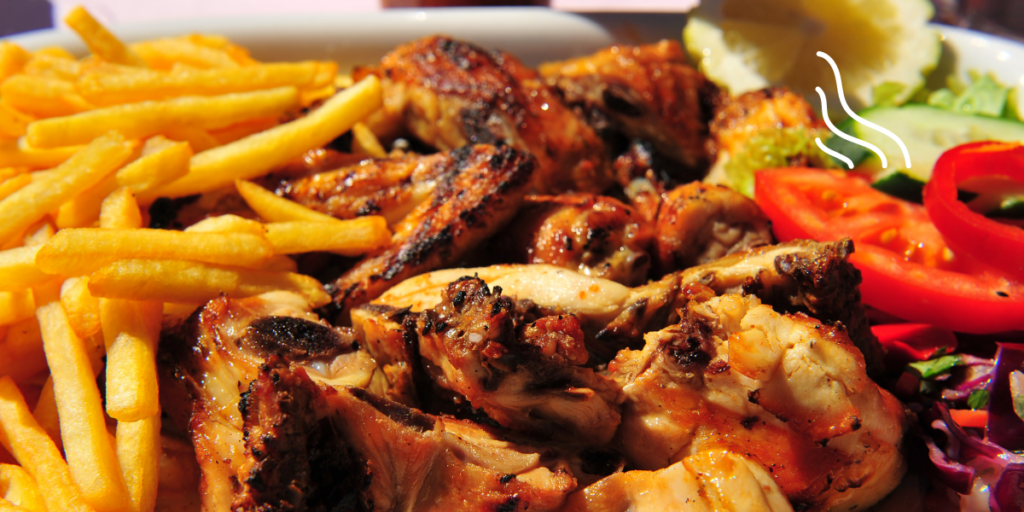
Seafood
Portugal’s extensive coastline blesses the country with an abundance of fresh seafood. Here are some of the most popular ones:
- Camarão (Shrimp): Portuguese shrimp are known for their sweet flavor. Enjoy them in the Algarve region, particularly in towns like Olhão or Tavira.
- Amêijoas (Clams): “Amêijoas à Bulhão Pato” is a popular dish. Try it in the Alentejo coastal towns like Vila Nova de Milfontes or in Lisbon’s seafood restaurants.
- Robalo (Sea Bass): This prized fish is often grilled whole. Enjoy it in coastal towns like Nazaré or Peniche, known for their fishing traditions.
- Dourada (Sea Bream): Another popular grilled fish. Cascais, just outside Lisbon, offers great restaurants serving fresh dourada.
- Percebes (Goose Barnacles): These unique crustaceans are a delicacy. Try them in the coastal town of Ericeira or in the Berlengas Islands.
- Lulas (Squid): Grilled, fried, or stuffed, lulas are versatile. Enjoy them in the Setúbal peninsula or in Matosinhos near Porto.
- Sapateira (Stone Crab): This meaty crab is often served cold as a starter. Try it in seafood restaurants in Lisbon or Porto.
For the ultimate seafood experience, consider visiting during a seafood festival. The Lisbon Fish and Flavours festival in April or the Olhão Seafood Festival in August are great options.
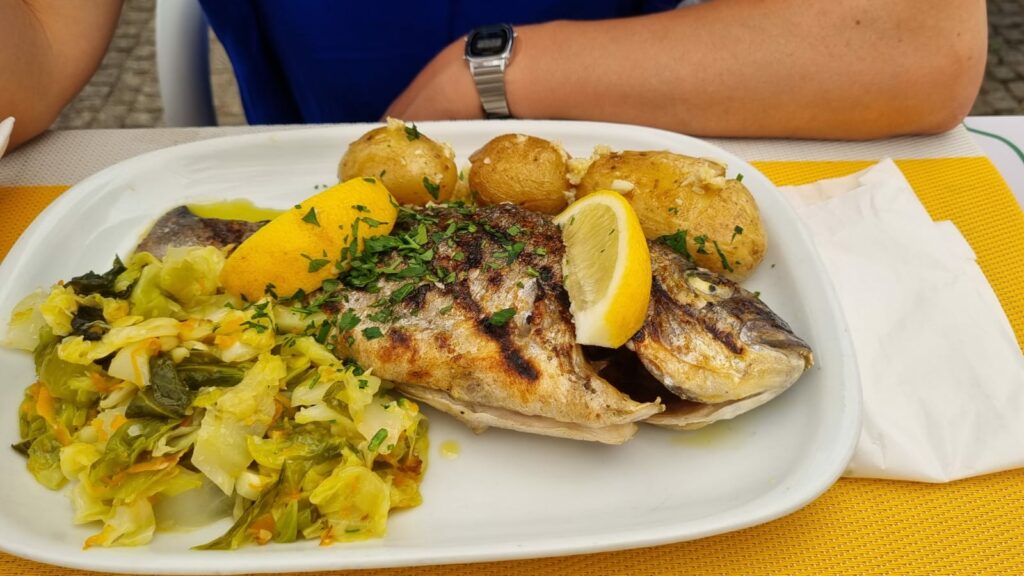
Meat
In Portugal meat is not as popular as in South America, so you will rarely find good cuts of meat here. However, Portugal has embraced a delicious import from its former colony: picanha. This prime cut of beef, known for its rich flavor and tender texture, has become increasingly popular in Portuguese restaurants and homes.
Picanha, also called “cap of rump” in English, is a cut from the top of the rump of the cow. In Brazil, it’s considered the king of meats for churrasco (Brazilian barbecue). Its popularity in Portugal is a testament to the growing Brazilian influence on Portuguese cuisine.
The influx of Brazilian immigrants to Portugal since the 1990s has significantly impacted the country’s culinary landscape. Brazilian restaurants, once a rarity, are now common in major Portuguese cities. These establishments often feature picanha as a star dish, introducing locals to its succulent taste.
In Portugal, picanha is typically prepared in the Brazilian style: cut into thick slices, seasoned simply with rock salt, and grilled to perfection. It’s often served with rice, black beans, and farofa (toasted manioc flour), staying true to its Brazilian roots.
However, Portuguese chefs have also begun incorporating picanha into more traditional Portuguese dishes, creating a fusion of flavors that represents the evolving relationship between the two cultures.
You can find excellent picanha in Brazilian-style steakhouses (churrascarias) in Lisbon and Porto. Some popular Portuguese restaurants have also added it to their menus, recognizing its growing appeal.
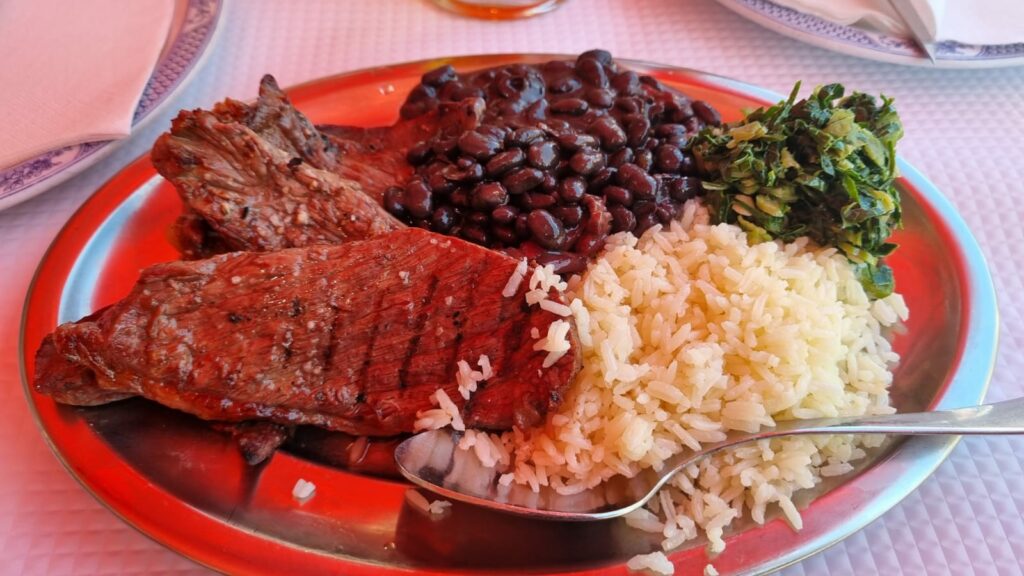
Portuguese Food That Challenge Tourists
- Cozido à Portuguesa
First, let’s talk about Cozido à Portuguesa. While incredibly authentic, especially the version on Ilha de São Miguel in the Azores, this dish is meaty, heavy, and often quite fatty or chewy. Honestly, it’s not for everyone. The textures and richness can be overwhelming, particularly for those unaccustomed to such hearty fare. - Tripas à Moda do Porto
Next, we have Tripas à Moda do Porto. As one of Portugal’s main dishes, Tripas is tripe. Unless you’ve grown up with it, the flavor and texture can be quite challenging. The unique taste and chewy consistency make it an acquired taste, to say the least. - Mão de Vaca com Grão
Moving on, let’s discuss Mão de Vaca com Grão. This is one of the “weird” Portuguese dishes you’re most likely to encounter. Made from a calf’s hoof, the unusual ingredient and its distinct texture make it a daring choice for adventurous eaters. It’s definitely not something you see every day! - Francesinha
Finally, there’s the Francesinha, I know we said before that the Portuguese are boring with their sandwiches, but this one went overboard. This hefty sandwich is made from ham, steak, sausage, big slices of bread, melted cheese, and tomato sauce and served with french fries. Its sheer size and rich, indulgent ingredients can be a bit much for those with a lighter palate.
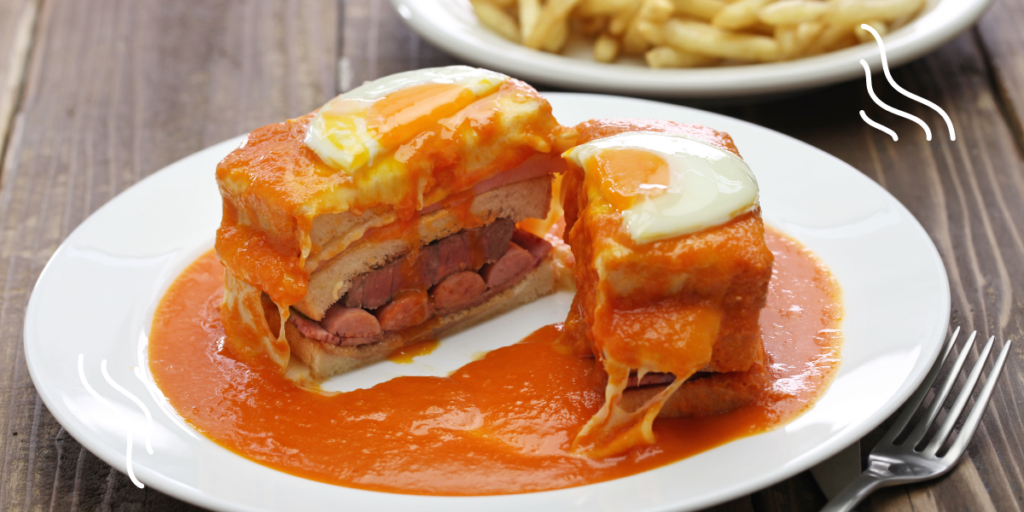
Wanna know about Portugal´s sweets and pastries? Check out this indulgent Post: Portuguese Pastries and sweets: 13 most popular delicacies
